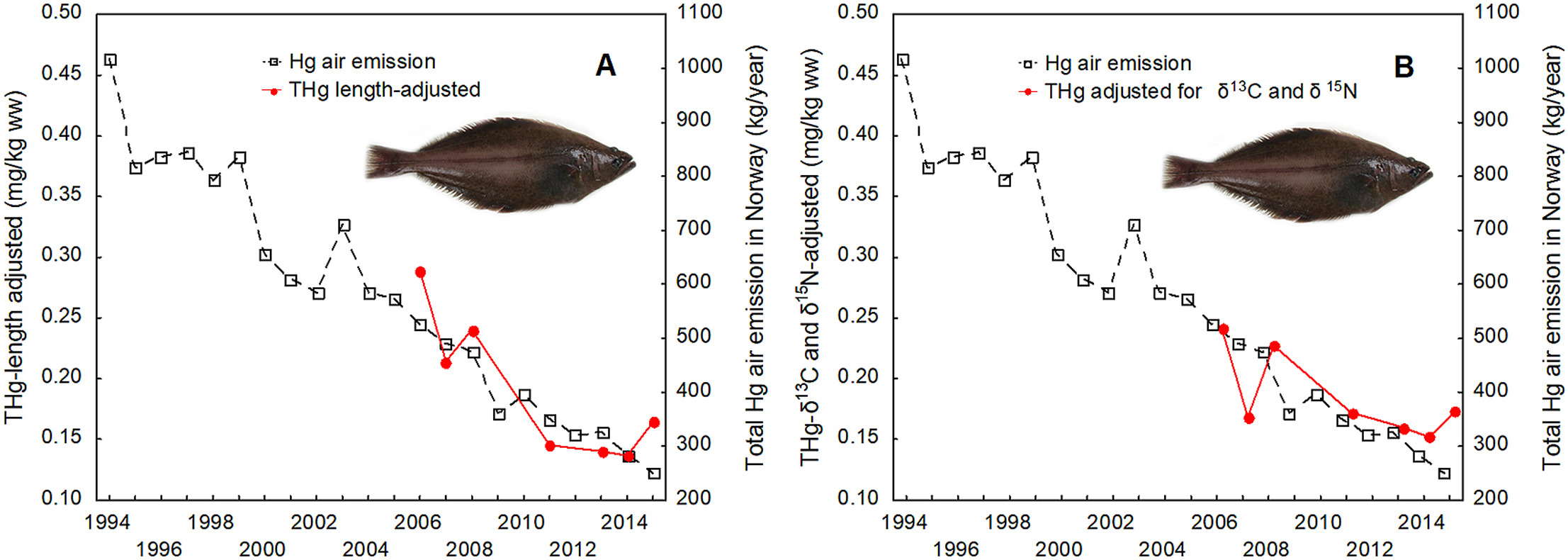Lower mercury concentrations in Greenland halibut

Sampes of Greenland halibut.
Photo: Erlend Astad Lorentzen / IMRPublished: 02.09.2021 Updated: 06.09.2021
This is the researchers’ conclusion after having analyzed data from the period 2006–2015. Part of the decline can also be explained by changes in fish size and diet.
The samples come from a baseline biomonitoring study that was conducted in 2006–2008, and from follow-up surveys conducted in 2011–2015. The work is now published in the journal Environmental Pollution.
“We saw much higher levels of mercury in the baseline study compared to the follow-up surveys. During this ten-year period, the concentration of mercury in Greenland halibut has decreased significantly,” says researcher Bente Nilsen.
Natural variation accounted for
Variation in mercury concentrations may be caused by several factors. Therefore, researchers cannot say anything about the reasons for the decline by only evaluating the mercury concentrations in the fish; they must also take into account natural causes of variation, including fish size and individual diet.
It is well known that mercury concentrations often increase with fish length and age.
“We saw that larger fish had been caught in the first years of sampling. Therefore, we had to use statistical methods to account for variation caused by fish length,” says Nilsen.
In addition, mercury concentrations are also affected by the diet of the fish.
“If fish eat prey high on the food chain, they often take up more mercury, as this contaminant bioaccumulates in the food chain,” Nilsen says.
Greenland halibut is an apex or top predator in the Norwegian Sea. That is, it is located near the top of the food chain. Therefore, this species can be exposed to a wide array of environmental contaminants, including mercury.

Lower emissions had an impact
To investigate whether there had been changes in the diet of the Greenland halibut, the researchers analyzed stable isotopes of carbon and nitrogen, a common method used in diet analysis. The data showed that the fish had shifted its diet, consuming prey that were further down on the food chain.
“But even after correcting for length and diet with statistical methods, we see a decrease in the mercury concentrations in Greenland halibut,” says Bente Nilsen.
Therefore, the researchers conclude that the decline was partially caused by lower mercury concentrations in the environment, specifically regional air emissions of mercury.
According to the Norwegian Environment Agency, emissions of mercury to water and air have been reduced by 80 per cent since 1995.
Supports efforts related to the UN Minamata Convention
Mercury is an environmental contaminant that can cause serious damage to human health (see fact box).
The Institute of Marine Research monitors mercury and other heavy metals in fish and other seafood to document the concentrations and to ensure that any fish with concentrations above the maximum levels are detected.
Mercury in Greenland halibut is also monitored as part of the environmental monitoring of Norwegian sea areas, especially since this species is such a good environmental indicator of mercury in marine ecosystems.
Data from these monitoring efforts, collected from a large number of Greenland halibut samples over a long period of time, have been used in the recently published article.
“The study is a good example of reproducible science that can be used in a policy context, and in support of the UN Minamata Convention on Mercury. We also used complex, Bayesian inference techniques to understand the degree of uncertainty in the models we presented,” says researcher Michael Bank.
